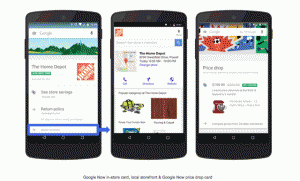
We have seen a lot of changes in the Internet as we move towards a faster, leaner website. There are a lot of articles talking about page speed optimization, but we have overlooked how other features are stepping up their game to provide the best technology for website owners.
Here are a few features that can help your website win among your competitors:
HTTP/2
It’s almost been a year since HTTP/2 has been supported by the new version of the WWW protocol.
HTTP/2 is a remarkable step up from HTTP/1 in terms of performance. HTTP/2, or fondly called by Google Developers as H2, has the ability to cover multiple requests in just a single connection; this is called multiplexing.
With HTTP/1, it can only load one large image instead of several small images at a time due to its incapability to handle multiple requests or multiplex. Now, this is possible through an H2 connection. H2 now compresses headers which simplify transport as this is done before the requested data are sent.
Because of multiplexing, sites on H2 experience up to 50% boost in performance. CDN77 has a great tool to demonstrate the difference between HTTP/1 and H2.
However, converting your website to H2 will require you to acquire an SSL certificate, since browsers only support H2 over a secured connection. After acquiring an SSL certificate, you can now implement H2 on your server, or you should talk to your web hosting company about implementing HTTP/2.
SSL Certificate
SSL secures the connection between the visitor (browser) and a website’s server. Only purchase an SSL certificate from legitimate, trusted certificate authorities. But if you want to try it out for free, you can get it from certain domain registrars like GoDaddy; from a nonprofit, open certificate authorities like Let’s Encrypt; and from commercial providers like Comodo SSL. These certificates are Class 1 certificates so expect less security but they’re cheap and can be automatically issued for a website.
BROTLI
In Fall of 2015, Google announced its new compression algorithm, Brotli. In their GitHub, Brotli is defined as:
Brotli is a generic-purpose lossless compression algorithm that compresses data using a combination of a modern variant of the LZ77 algorithm, Huffman coding, and 2nd order context modeling, with a compression ratio comparable to the best currently available general-purpose compression methods. It is similar in speed with deflating but offers denser compression.
To simply put it, Google’s Brotli is a new compression algorithm that significantly reduces the size of transported data by 20-26% against the current compression algorithm.
However, Brotli is supported only by two major browsers, Chrome and Firefox. On the other hand, major servers like Nginx, Apache, and Node.js require a packet installation for Brotli to work. At the moment, other browsers will soon follow to adapt Brotli, while there’s no server that offers Brotli by default yet.
CDN
A Content Delivery Network is a set of servers around the world. These servers contain copies of your site’s content (images, videos, software etc.). When accessed, your data loads from a server closer to the visitor and so the overall loading is much faster everywhere on the planet.
Another great advantage is the improved reliability of your site. As the content is spread around tens of servers, your web hosting server is spared a significant portion of traffic and therefore is better protected from crashing. The result is a website loading faster by an average of 50 percent, but usually even more.
Although CDN works wonders in improving user experience, it is not necessary for all websites to avail of it. Considerations in availing of CDN include where your target users are (so you know which servers in the world to tap), how much you are ready to allot for CDN costs (prices range from affordable to premium), and the current status of your users’ experience in visiting your website (so you can assess whether you need a boost in loading your site or not). One of the free CDNs in the Internet is offered best by Cloudflare.
Google AMP
Google launched its newest project, the Accelerated Mobile Pages or AMP, in February 2016. Google AMP is the company’s answer to the movement of users from computers to phones in their day-to-day searching and browsing activities. Google AMP is seen made to help increase user experience of those who browse the Internet using mobile phones. In fact, Google AMP is said to load web pages 85% faster than ordinary pages.
Google has released a tutorial on how to turn your website into an AMP. Basically, the tutorial goes as follows:
- Create an AMP HTML page
- Include images (photos, videos, audios will work)
- Modify elements (size restrictions apply)
- Self-evaluate against Google’s metrics
- Prepare your page for discovery
- Publish
Google AMP is great for mobile users – their experience will be better when the pages they visit load faster. However, Google AMP is not the only initiative in improving the loading time of web pages. Facebook’s Instant Articles and Apple’s News also do the same, and when it comes to the delivery of ads, Facebook beats Google. But if you are opting for SEO, then Google AMP can help you best.
LEAD THE WAY!
These innovations for websites are all geared for the improvement of user experience. It is therefore greatly important for you to tap these developments and provide an improved, faster website for your users.
A fast-loading website encourages movement within your site, allowing your visitors to have a better knowledge of your products, services, advocacies, and whatnot, ultimately leading to conversions. It’s astonishing how the simple improvement of loading speeds can make wonders for your website, for your users, and for your business.
So utilize these developments now and improve your website. A slow-loading site is a thing of the past. It’s time to go modern, equipped with advances that are ready for the challenges of today. Go and lead the way!
Digital & Social Articles on Business 2 Community(87)










